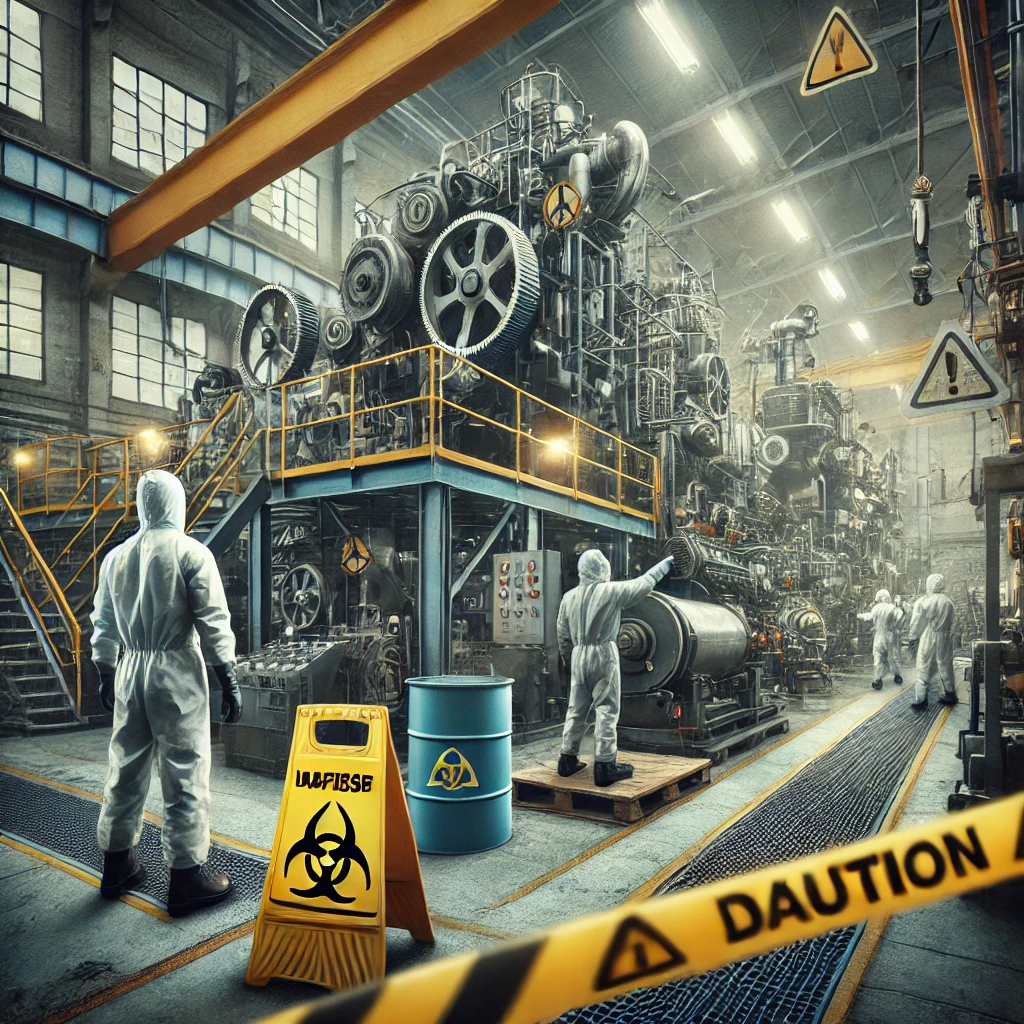Understanding Lawsuits Related to Industrial Accidents: Key Insights for Employers and Workers
Industrial workplaces—factories, construction sites, and manufacturing plants—can be high-risk environments. Despite stringent safety measures and regulations, industrial accidents can still occur, sometimes resulting in significant injuries, property damage, or even fatalities. When these incidents happen, lawsuits may follow as injured employees, their families, or regulatory bodies seek to hold employers accountable. This post will explore the nature of lawsuits stemming from industrial accidents, legal standards, common claims, and the implications for both employers and employees.

1. Common Causes of Industrial Accidents
Before diving into the legal landscape, it’s essential to understand some of the common causes of industrial accidents:
- Mechanical Failures: Machinery malfunctions, improper maintenance, or design flaws can cause serious injuries.
- Lack of Proper Training: When employees aren’t adequately trained, they may misuse equipment or overlook safety procedures.
- Negligent Supervision: Poor oversight from managers or supervisors may result in dangerous workplace conditions.
- Safety Violations: Violations of OSHA (Occupational Safety and Health Administration) regulations or other industry standards can directly lead to accidents.
- Environmental Hazards: Exposure to toxic chemicals, extreme temperatures, and other hazards can result in injuries and illnesses over time.
These causes can lead to physical injuries, long-term health issues, and psychological impacts. Legal actions often focus on these areas to determine whether negligence or regulatory non-compliance was involved.
2. Types of Lawsuits in Industrial Accidents
There are two main types of lawsuits that may follow an industrial accident:
a. Workers’ Compensation Claims
Workers’ compensation claims are typically the first line of recourse for employees injured on the job. Almost all employers are required to carry workers’ compensation insurance, which provides wage replacement and medical benefits to injured employees. However, accepting workers’ compensation usually means that the employee waives the right to sue the employer directly.
Exceptions may occur if the injury was due to intentional misconduct or gross negligence by the employer. In these cases, injured employees might bypass the standard workers’ compensation process and pursue a civil lawsuit.
b. Personal Injury Lawsuits
In some situations, employees may be able to file personal injury lawsuits against third parties involved in the accident. For example, if a machine manufacturer provided defective equipment that led to the accident, the employee might file a product liability claim against the manufacturer.
These lawsuits can yield larger payouts than workers’ compensation claims, including damages for pain and suffering and other non-economic damages that workers’ compensation doesn’t typically cover. However, the plaintiff must prove that the third party’s negligence or product defect was a significant factor in causing the accident.
3. Legal Standards and Employer Liability
Employers are legally obligated to maintain a safe workplace under OSHA regulations and other state and federal safety laws. Key standards include:
- Providing Safety Training: Employers must offer regular, comprehensive safety training to employees.
- Maintaining Equipment: Regular inspections and maintenance of equipment are essential to avoid malfunctions.
- Identifying and Mitigating Hazards: Employers must identify potential hazards and implement safeguards.
- Documentation and Compliance: Proper documentation of safety protocols and compliance with OSHA standards are critical defenses in industrial accident lawsuits.
If an employer fails in these duties, they could be found liable in a lawsuit, especially if there’s evidence that they ignored warnings, failed to provide proper training, or didn’t address known hazards.
4. Typical Claims and Damages Sought
Lawsuits stemming from industrial accidents often include the following types of claims:
- Negligence: Plaintiffs may argue that the employer failed to exercise reasonable care in maintaining a safe work environment.
- Product Liability: If a defective product caused the injury, a lawsuit might target the product’s manufacturer.
- Wrongful Death: In tragic cases of fatalities, families can sue for wrongful death, seeking damages for the loss of income, companionship, and other non-economic factors.
- Emotional Distress: In some cases, psychological damages, such as post-traumatic stress disorder (PTSD), may also be a component of the lawsuit.
Damages typically sought in these cases include medical expenses, lost wages, future earning potential, pain and suffering, and punitive damages in extreme cases.
5. Case Examples
Several high-profile cases illustrate the complexities involved in industrial accident lawsuits:
- The BP Deepwater Horizon Explosion (2010): This tragic accident resulted in multiple fatalities, and lawsuits were filed not only against BP but also against contractors and equipment manufacturers involved. The resulting settlements and fines were some of the largest in industrial accident history.
- John Crane Inc. Asbestos Litigation: Workers exposed to asbestos through defective products filed lawsuits against John Crane Inc., alleging negligence and lack of safety warnings. The company faced multiple settlements over decades due to long-term health impacts.
- Tianjin Port Explosion (2015): This devastating chemical explosion in China led to significant casualties and financial loss, with lawsuits filed against various stakeholders involved in the management, transportation, and storage of hazardous materials.
6. Implications for Employers and Employees
For employers, industrial accident lawsuits underscore the importance of proactive risk management. Regular audits, compliance with safety regulations, and maintaining thorough documentation are essential measures that can prevent accidents and provide defenses if litigation occurs. Additionally, liability insurance and crisis management plans can help mitigate the financial and reputational impacts of accidents.
For employees, it is crucial to understand their rights and responsibilities in the workplace. Familiarity with safety protocols, awareness of potential hazards, and reporting unsafe conditions can help reduce risk and protect both their well-being and their legal options if an accident occurs.
Conclusion
Industrial accident lawsuits serve a critical role in promoting accountability, compensating victims, and encouraging safer workplace practices. By understanding the legal landscape surrounding these incidents, both employers and employees can take proactive steps to enhance workplace safety, navigate the aftermath of accidents more effectively, and ensure fair outcomes in the event of litigation.